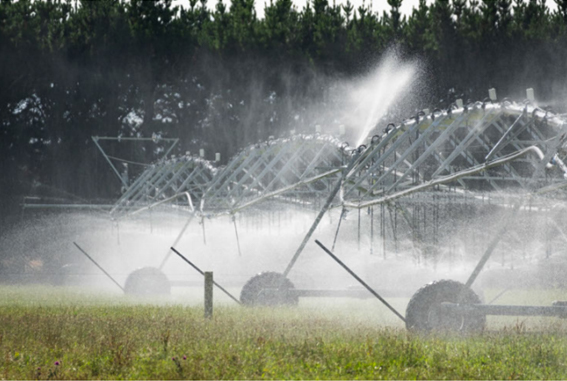Measuring and modelling paddock water inputs and losses on stony soils
In this section
-
Reducing nitrogen losses from farms
- Measuring and modelling paddock water inputs and losses on stony soils
- Annual net inputs and losses of carbon and nitrogen for irrigated and non-irrigated lucerne
- Carbon inputs to reduce nitrogen losses
- Sward species and cattle diet effects on nitrogen losses
- Contrasting microbial activities in topsoil and subsoil
- Identifying soils with low nitrogen losses
- Mauriora Systems Framework: A guide and process for decision-making
- Recommendations for farmers
Key findings
- We used a hydrological model to predict inputs and losses of water under irrigated and non-irrigated lucerne and tested the findings against field measurements.
- The model was good at predicting day-to-day variation and the timing of drainage, and how incoming water (rain or irrigation) was split into evaporation and drainage to deeper soil layers and groundwater.
- We are now extending the work using another model that includes soil nutrient and crop growth processes to predict the movement of nutrients, primarily nitrogen and phosphorus, through the soil, and test the findings against our field measurements of leaching losses.
To manage water for agriculture efficiently and prevent nutrient leaching, we must know how much water enters and leaves the soil. For stony soils that occur on much of the Canterbury Plains, we do not have good estimates of water flows and storage, so it is hard for farmers to manage these soils.

Irrigation is used extensively to enhance productivity in the dry summer period but musty be balanced carefully with crop requirements to avoid drainage losses (Bradley White)
Using our unique experimental set-up at Ashley Dene Research & Development Station, Scott Graham and collaborators from Manaaki Whenua – Landcare Research have been measuring water flows and storage in the soil, both under irrigated and non-irrigated lucerne. At each site, an eddy covariance system, six large lysimeters (2 m diameter, 1.5 m deep) and profiles of sensors for soil water content continuously measure evaporation, drainage and soil water storage along with precipitation from rainfall and irrigation. With these measurements, we calibrated and tested a water balance model to see if we can accurately predict day-to-day variations in soil water in these stony soils. We used the soil water flow model HYDRUS-1D and compared model predictions of evaporation, drainage and storage in the soil profile to field measurements.
Generally, the model was good at predicting the timing of drainage, and how incoming water (rain or irrigation) was split into evaporation from plants and soil and drainage to deeper soil layers and groundwater. We did see uncertainties about the exact amount of water in the soil, as this was overestimated by the modelled soil profile, although day-to-day variations were well-predicted.
We have now successfully modelled water movement, and we are extending this work to include the movement of nutrients, primarily nitrogen and phosphorus, through the soil, in collaboration with Joanne Sharp from Plant and Food Research using the APSIM model that includes soil nutrient and crop growth processes. Once we have confidence that all these components of agricultural stony soils are working well, we can perform scenario analyses.
This is where we can “ask” the model questions on how different irrigation, effluent and grazing management strategies affect outcomes such as nitrogen leaching, carbon balances or water losses. Optimising management for productivity alone may come at a cost for soil carbon or nitrogen leaching, and scenario analyses may be able to find where balances between production and environmental outcomes can be achieved by improving practices.
For more details go to
Graham SL, Laubach J, Hunt JE, Eger A, Carrick S, Whitehead D. 2019. Predicting soil water balance for irrigated and non-irrigated lucerne on stony, alluvial soils. Agricultural Water Management 226:105790. https://doi.org/10.1016/j.agwat.2019.105790
